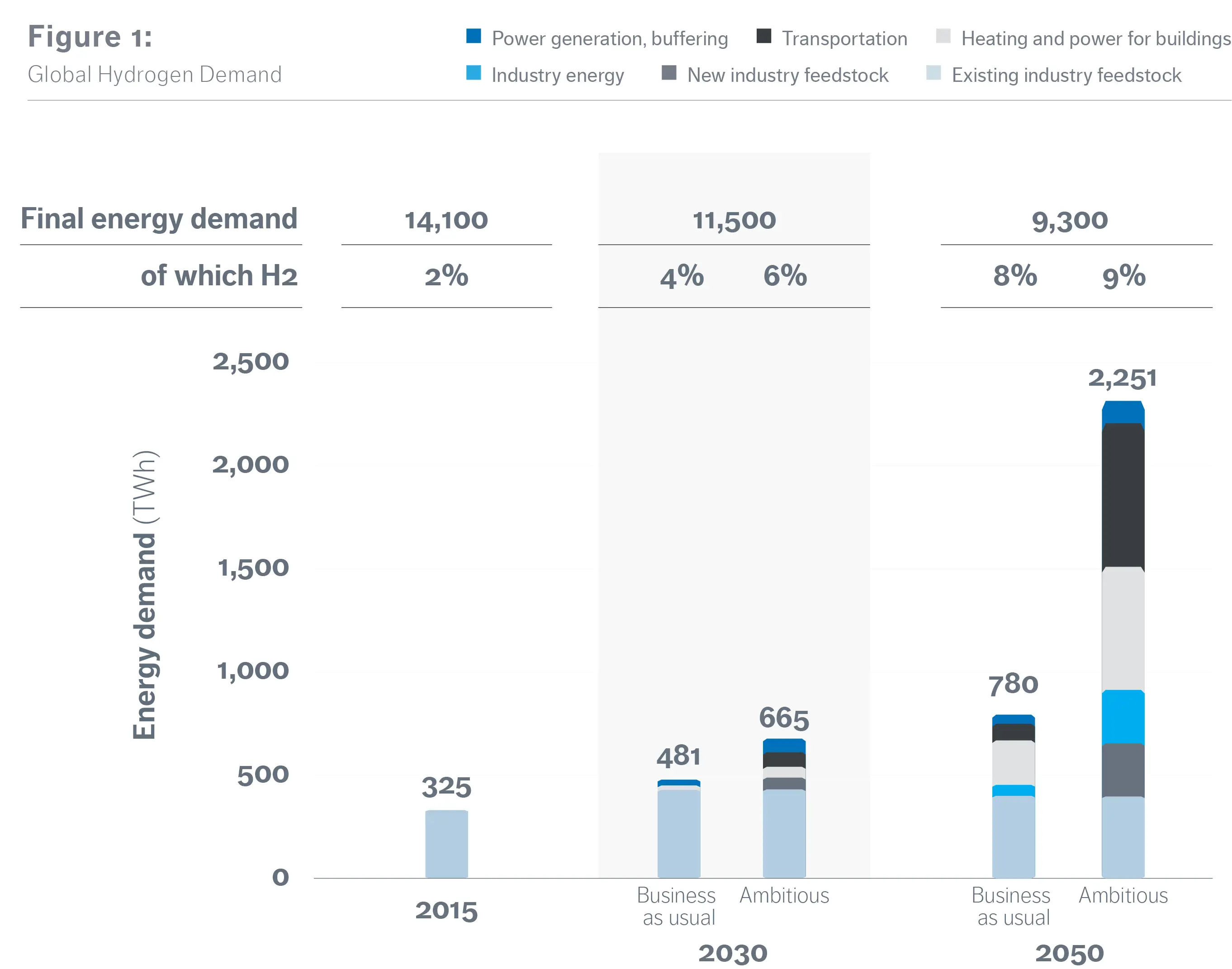Powering up for a carbon-neutral world
Hydrogen has long been talked about as a “clean” source of energy of the future. However, technology did not exist to make that happen at an affordable cost and on a wide scale. This is changing fast and governments are moving to support hydrogen-based power with substantial public investment and business incentives, presenting a multitude of opportunities for investors.
- The EU will support an increase in hydrogen energy generation to 40 GW by 2030, an equivalent to the maximum capacity of 20 Hoover Dams or the electric consumption of about 20 million homes.
- An expansion of planned hydrogen power generation will involve a remarkable investment of between EUR180bn and EUR470bn by 2050, according to the EU.
- For investors, this offers an opportunity to diversify between projects of different timescales and between different hydrogen business types (electrolysis, H2 producer or a fuel cell producer).
In the power sector, hydrogen is expected to become a catalyst for value creation over the long term. However, high costs, regulation and technology remain the main obstacles for hydrogen becoming a serious competitive option in the near future. It will also be necessary to increase production capacity of "green" electricity so that the hydrogen produced through electrolysis can be regarded as truly “green”. In the transport sector, hydrogen will not be the only way to achieve carbon neutrality for Europe by 2050 but it will have an important role to play.


